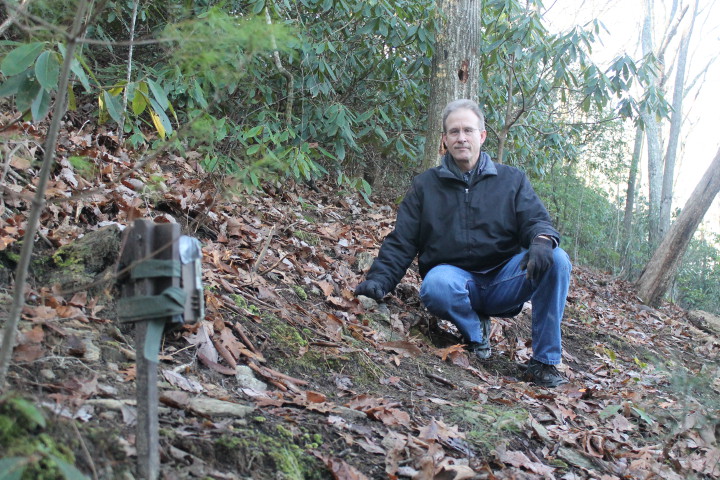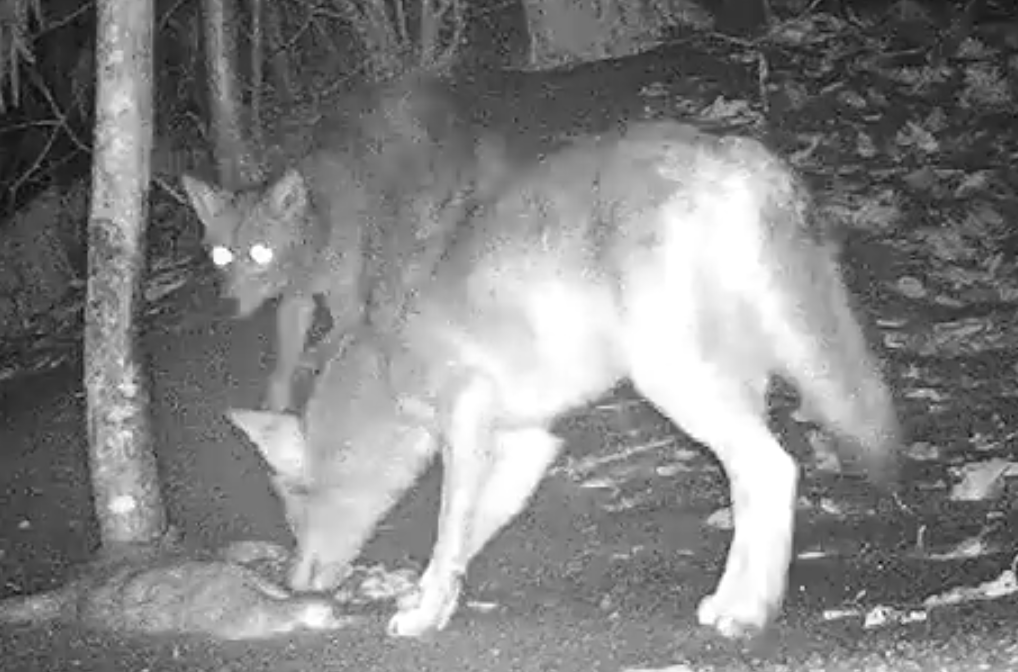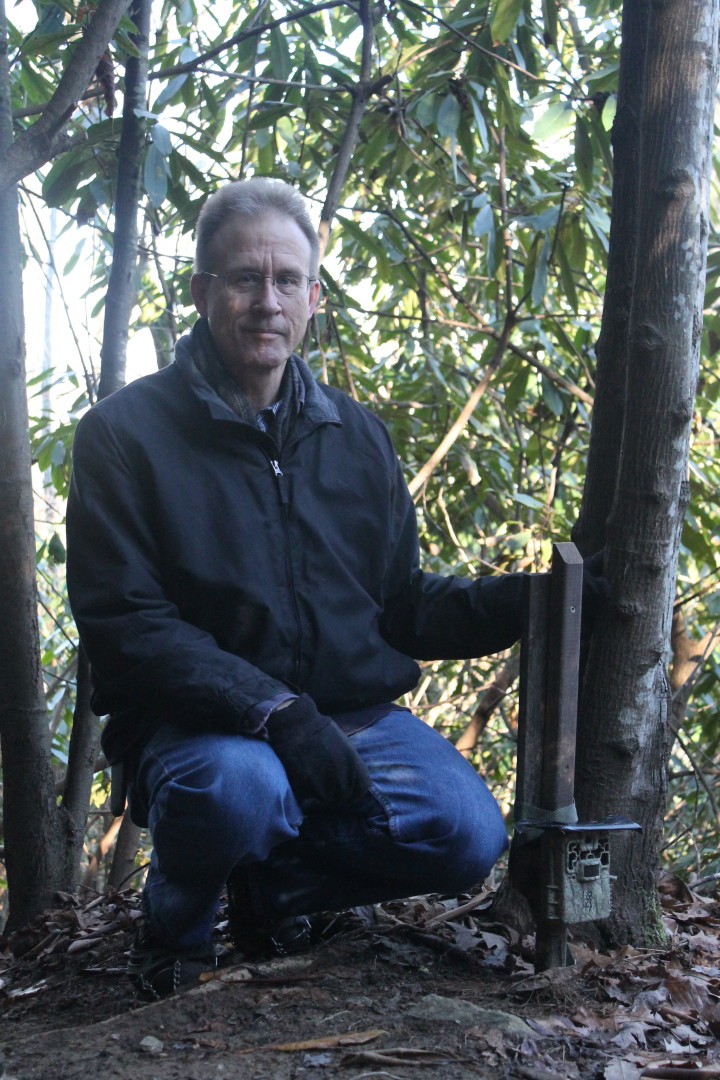A mere 50 yards from the back door of Tom Brass’s Henderson County home, bears, bobcats, coyotes and foxes creep across the mountain ridge, and Brass has the video evidence, posted on his YouTube channel, to prove it.
Using three infrared, motion and heat-sensitive heat-activated, Browning trail cameras, Brass collects upward of 400 videos per week of nearly a dozen species of wildlife right in his backyard.

Brass and his wife, Charlotte, moved from Minneapolis to Western North Carolina four years ago. Their 1-acre plot is nestled between Hendersonville and Mills River, and not far from their property lies the peak of Long John Mountain, along with more than 200 acres of undeveloped land.
A lifetime outdoor enthusiast and former wildlife photographer, Brass says he became interested in using trail cameras, designed for hunters, to capture videos of wildlife after he moved to WNC, and it quickly developed into his biggest hobby.
“I think I do this because I love the mystery and adventure of the outdoors,” he says.
The ideal site for the trail cameras, Brass discovered, is secluded, level and raked clean of sticks and leaves. “It’s comfortable for them,” he says.
To increase wildlife traffic, he groomed preexisting game trails and developed a few of his own, introducing intersections. “I created crossroads so I would have more chances of seeing them come through,” he explains. “It’s all very strategic.”
Originally, he also collected raw meat scraps from a butcher shop to lure animals to the camera sites, but no longer does. “In some of my earliest videos, you’ll see fox and coyotes pulling at stuff, which is meat scraps tied to a tree,” Brass says, “but then I stopped doing that because I don’t want to attract them.”
In order to encourage deer, raccoons, squirrels and other non-predatory animals to pause in front of the lens, Brass occasionally sprinkles corn or salt at his camera sites.
For the predators, he eventually developed his own trick to entertain the animals without feeding them.
“I heat bacon grease and paint a tree with it,” Brass explains. “I also sometimes spray a little bit of a predator-attracting spray that trappers use. You can smell it hundreds of feet away. So if anything wanders through, it holds them long enough to get a decent video while they sniff around.”
His cameras have the ability to capture both day- and night-time videos in 10 second bursts, with audio. “With the infrared, it can only stay on for 10 seconds, or it will burn itself out,” he explains.
Using VideoPad, a free editing software program, Brass spends about six hours per week sifting through the clips, merging files together to create videos and enhance their visual quality, and then posting them online. “I like to try to create a story in each one,” Brass says.





I love watching wildlife, whether live or on camera. I do think that even though he no longer uses meat scraps, by using bacon grease, attractant sprays and sprinkles of corn or salt, he is continuing to attract the animals to the area. Especially the coyotes have an amazing sense of smell and can be drawn from great distances.